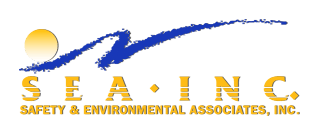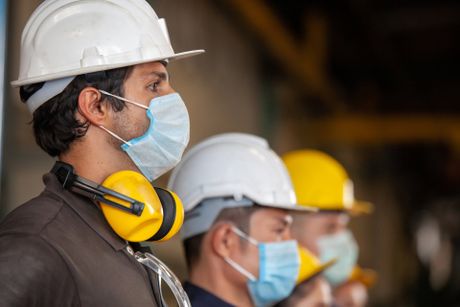OSHA ANNOUNCES ISSUANCE OF MORE SECURE TRAINING CARDS
OSHA 10 and OSHA 30 training can improve worker safety and reduce worker’s compensation claims. The growing success of this program has led OSHA to take steps to improve course completion security.
March 2019 – Little Rock, AR – SEA Inc., a major industrial safety, environmental services and training company, has announced that its long-running OSHA safety training program for manufacturers, construction companies, and other industrial customers will be adopting new, more secure student course completion cards consistent with recent guidance from the Occupational Safety and Health Administration (OSHA).
SEA’s OSHA safety courses are part of OSHA’s Outreach Training, a program that gives individual workers and their supervisors structured safety training that helps them recognize, avoid, and address safety hazards in the workplace. Studies have shown that workers who have participated in safety training programs report fewer accidents resulting in significant reductions in workers compensation claims.
There are four general classes of training under Outreach OSHA safety training. The Construction Industry program is for workers employed at residential and commercial building sites. The Maritime program provides courses for employees of shipbuilders, marine terminals, and related on-shore facilities. The Disaster Site training is for workers involved with demolition and clean up in the wake of natural and man-made disasters. Finally, there is General Industry training, which supports those working in manufacturing and other industrial settings.
In each of the four general classes of Outreach training, workers can participate in a 10-hour (OSHA 10) or a 30-hour course (OSHA 30). OSHA 10 is intended for entry-level employees. OSHA 30 is for supervisors and/or those with broader safety responsibilities. Trainers giving these courses receive special OSHA certification and are authorized to issue student course completion cards.
The need for more secure student course completion cards has been driven by the Outreach Training Program’s increasing acceptance. While employers are not required by OSHA to participate, some cities and states are now mandating OSHA 10 for construction workers. This has led many companies to require job applicants to have already completed the OSHA 10 or OSHA 30 course.
In addition, other companies are making Outreach Training an integral part of their in-house safety programs. Over the past five years, some 3.6 million workers have participated in Outreach OSHA 10 or OSHA 30 training.
The new course completion cards will be more durable than the current paper cards and will include the student’s name, trainer, training date, and the name of the OSHA Training Institute that sponsored the course. The cards will also include a QR code that can be used by employers to check the employee’s name against a database of trainers and students.
SEA’s safety-training courses include OSHA 10 and OSHA 30 General Industry and Construction Outreach Training. Open enrollment courses are held in Little Rock and St. Louis. In addition, employers can schedule on-site training for their employees.
For more information about SEA’s OSHA Outreach Training, contact SEA at 501-568-3111 to speak with one of our training specialists.

f you think PFAS regulation is someone else’s problem, think again. The regulatory environment around per- and polyfluoroalkyl substances is shifting rapidly, and safety, environmental, and operations teams are squarely in the crosshairs. Rather than scrambling when the deadlines arrive, your best strategy is to act early.

Halloween might be the season for ghost stories and haunted houses, but for safety and environmental professionals, the real nightmares happen at work. From unseen hazards to data disasters, these frights are all too real. At SEA, we help EHS managers conquer their fears — and their risks — with smart, proactive solutions that turn horror stories into success stories.

Every year, OSHA releases its list of the most frequently cited workplace safety standards. While the names change little from year to year, the numbers tell a story: employers continue to struggle with the same hazards—falls, hazardous chemicals, and machine safety. Understanding these violations is the first step in preventing costly citations and protecting workers.

